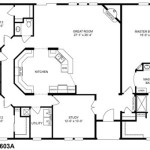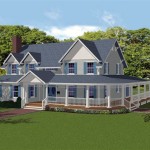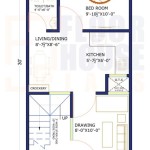Home Exercise Plan To Build Muscle
The pursuit of muscle growth is often associated with elaborate gym setups and specialized equipment. However, effective muscle building can be achieved through a well-structured home exercise plan. This article outlines a comprehensive approach to building muscle from the comfort of one's own residence, focusing on key principles, effective exercises, and strategies for progression.
The cornerstone of any muscle-building program, whether at home or in a gym, is progressive overload. This principle dictates that muscles adapt and grow when consistently challenged beyond their current capacity. This can be achieved by gradually increasing the weight lifted, repetitions performed, or sets completed over time. Simply performing the same routine repeatedly without increasing the demand on the muscles will eventually lead to a plateau in progress.
Another crucial aspect is nutrition. Muscle growth requires a caloric surplus, meaning consuming more calories than the body expends. This surplus provides the necessary energy for protein synthesis, the process by which the body repairs and builds muscle tissue. Additionally, adequate protein intake is essential, typically ranging from 1.6 to 2.2 grams of protein per kilogram of body weight per day. This protein provides the building blocks, amino acids, needed for muscle repair and growth.
Furthermore, rest and recovery are paramount. Muscles do not grow during exercise; rather, they grow during periods of rest. Adequate sleep, typically 7-9 hours per night, is crucial for hormonal regulation and muscle repair. Active recovery, such as light cardio or stretching, can also aid in reducing muscle soreness and promoting blood flow to the muscles.
Key Principles for Home Muscle Building
Several key principles underpin successful muscle growth when training at home. These are not specific exercises, but rather guiding philosophies that shape the entire program.
First, prioritizing compound exercises is crucial. Compound exercises are movements that engage multiple muscle groups simultaneously. These exercises are more efficient for stimulating overall muscle growth and burning more calories than isolation exercises, which target a single muscle group. Examples of compound exercises suitable for home workouts include squats, push-ups, lunges, and rows (using resistance bands or bodyweight variations). These exercises recruit larger muscle groups, triggering a greater anabolic response in the body.
Second, focusing on exercise form is paramount. Performing exercises with correct form is essential for maximizing muscle activation and minimizing the risk of injury. Before adding weight or increasing repetitions, individuals should ensure they can perform the exercises correctly with good form. Video tutorials and online resources can be helpful in learning proper form. It is often beneficial to record oneself performing the exercises to assess and correct any form deviations. Maintaining control throughout the entire range of motion is also crucial for maximizing muscle engagement and minimizing momentum, which can reduce the effectiveness of the exercise.
Third, understanding the importance of mind-muscle connection. The mind-muscle connection refers to the ability to consciously focus on the muscles being worked during an exercise. This can enhance muscle activation and lead to better results. Engaging in slow, controlled movements and focusing on squeezing the target muscle at the peak of the contraction can help to improve the mind-muscle connection. This heightened awareness can lead to more effective muscle recruitment and subsequently, enhanced muscle growth.
Effective Home Exercises for Muscle Growth
The following exercises can be incorporated into a home workout plan to stimulate muscle growth. Adjustments and variations can be made to suit individual fitness levels and available equipment.
Squats: A fundamental exercise for lower body strength and muscle growth. Bodyweight squats can be progressed to pistol squats (single-leg squats) or squats with added resistance using household items such as water jugs or backpacks filled with books.
Push-ups: A versatile exercise that targets the chest, shoulders, and triceps. Variations include incline push-ups (easier), decline push-ups (more challenging), and diamond push-ups (more challenging for triceps). Push-ups can be modified by performing them against a wall for easier modifications.
Lunges: Another effective exercise for lower body strength and muscle growth. Variations include forward lunges, reverse lunges, walking lunges, and lateral lunges. Lunges can be progressed by holding weights or performing jump lunges.
Plank: A full-body isometric exercise that engages the core, shoulders, and glutes. Plank variations include side planks, plank jacks, and forearm planks. The plank helps to build core stability, which is important for many other exercises.
Glute Bridges: An exercise that targets the glutes and hamstrings. Glute bridges can be progressed by performing single-leg glute bridges or adding resistance by placing a weight on the hips.
Resistance Band Rows: Resistance bands can be used to perform rowing exercises, which target the back muscles. Resistance bands can be adjusted to provide varying levels of resistance.
Resistance Band Bicep Curls: Resistance bands can be used to perform bicep curls, which target the biceps muscles. Resistance bands can be adjusted to provide varying levels of resistance.
Overhead triceps extensions: Resistance bands can be used to perform overhead triceps extensions, which target the triceps muscles. Resistance bands can be adjusted to provide varying levels of resistance.
Calf Raises: A simple but effective exercise for the calf muscle. Calf raises can be done by standing on an elevated surface to increase the range of motion.
Each of these exercises can be modified based on the individual's level, available equipment, and specific goals.
Structuring a Home Workout Plan
Creating a structured workout plan is essential for maximizing muscle growth. A well-designed plan ensures that all muscle groups are adequately trained and that progressive overload is consistently applied.
One approach is to split the workouts into different days, focusing on different muscle groups. For example, one day could be dedicated to upper body exercises (chest, back, shoulders, biceps, triceps), while another day could be dedicated to lower body exercises (quadriceps, hamstrings, glutes, calves). A third day could be dedicated to core work and/or full-body exercises. This allows for adequate recovery time for each muscle group between workouts.
Another approach is to perform full-body workouts three times per week, with rest days in between. This approach is particularly effective for beginners, as it allows them to train all muscle groups more frequently. It also promotes greater overall calorie expenditure.
Regardless of the chosen approach, each workout should include a warm-up, followed by the main exercises, and a cool-down. The warm-up prepares the muscles for exercise and reduces the risk of injury. The main exercises should be performed with proper form and focus on progressive overload. The cool-down helps to reduce muscle soreness and promote recovery.
A sample workout schedule could look like this:
Monday: Upper Body (Push-ups, Resistance Band Rows, Resistance Band Bicep Curls, Overhead triceps extensions).
Tuesday: Rest
Wednesday: Lower Body (Squats, Lunges, Glute Bridges, Calf Raises).
Thursday: Rest
Friday: Full Body (Squats, Push-ups, Resistance Band Rows, Plank).
Saturday: Rest
Sunday: Active Recovery (Light Cardio, Stretching).
The number of sets and repetitions performed for each exercise will depend on the individual's fitness level and goals. A general guideline is to perform 3-4 sets of 8-12 repetitions for each exercise. For bodyweight exercises, the goal is to perform as many repetitions as possible with good form.
Progressive overload can be achieved by gradually increasing the weight lifted (if using weights), the number of repetitions performed, or the number of sets completed. Another approach is to make the exercises more challenging by using variations (e.g., progressing from incline push-ups to decline push-ups). It is important to track progress and make adjustments to the workout plan as needed.
In addition to structured workouts, incorporating daily physical activity is also beneficial for overall health and muscle growth. This can include walking, jogging, cycling, or other activities that get the heart rate up and engage the muscles.
Building muscle at home requires commitment, consistency, and a well-structured plan. By following the principles outlined in this article, individuals can achieve their muscle-building goals without the need for expensive gym memberships or specialized equipment. A focus on progressive overload, proper form, adequate nutrition, and sufficient rest and recovery are the keys to success.

Simple Home Workouts To Build Muscle Hot

Muscular Endurance Workouts At Home

At Home Workout Plan Without Equipment To Build Muscle And Lose Weight

Home Workout Muscle Building Plan Full For Gain

Home Exercises For Fantastic Bigger

Home Workout Plan To Build Muscle No Equipment

Daily Ping Exercise Routine Women Home

Home Weights Workout Dumbbell Training Routine To Build Muscle Plans

Build Your Own Home Workout Chest Back And Abs

30 Min No Equipment Full Build Muscle Burn Fat At Home Workout








